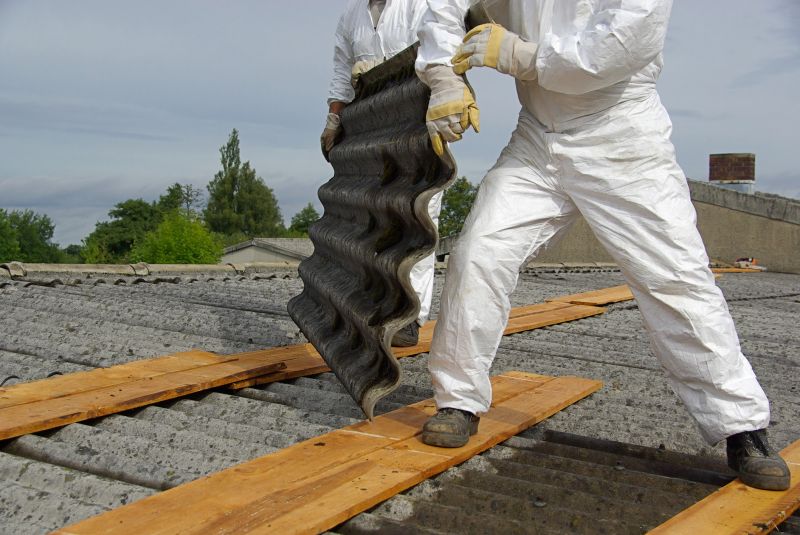Top-Rated Supplies For Asbestos Remediation Success
Equip yourself with high-quality products designed to deliver safe, efficient, and compliant asbestos remediation results.
 Products for asbestos remediations encompass a wide range of tools and materials designed to safely identify, contain, and remove asbestos-containing materials. Proper handling of asbestos requires specialized equipment to prevent fiber release and protect the health of workers and occupants. These products are essential in renovation, demolition, or maintenance projects where asbestos presence is suspected or confirmed. From protective gear to containment systems, each product plays a vital role in ensuring that asbestos abatement is conducted in accordance with safety standards.
Products for asbestos remediations encompass a wide range of tools and materials designed to safely identify, contain, and remove asbestos-containing materials. Proper handling of asbestos requires specialized equipment to prevent fiber release and protect the health of workers and occupants. These products are essential in renovation, demolition, or maintenance projects where asbestos presence is suspected or confirmed. From protective gear to containment systems, each product plays a vital role in ensuring that asbestos abatement is conducted in accordance with safety standards.
Top Overall Option
Comprehensive Asbestos Abatement Kit
A complete asbestos abatement kit typically includes protective suits, respirators, gloves, containment barriers, HEPA vacuums, and disposal bags. Such kits are designed to provide all essential tools for safe and effective asbestos removal, making them a versatile choice for professionals and experienced DIYers. They facilitate a comprehensive approach to asbestos remediation, emphasizing safety and compliance in every step.
Types of Products For Asbestos Remediations
Respirators and Masks
Designed to filter airborne asbestos fibers, these respirators are essential for worker protection during removal activities.
Protective Suits
Full-body suits made from specialized materials help prevent fiber contact with skin and clothing.
Gloves and Hand Protection
Heavy-duty, chemical-resistant gloves safeguard hands from fibers and contamination during handling.
Containment Barriers
Plastic sheeting and enclosures create sealed work zones to contain asbestos fibers during removal.
Negative Air Pressure Systems
These systems help maintain airflow to prevent fiber escape during abatement procedures.
HEPA Vacuum Cleaners
High-efficiency particulate air (HEPA) vacuums are used for cleaning surfaces and equipment after removal.
Asbestos Waste Bags
Specialized, labeled bags ensure safe containment and transportation of asbestos debris.
Inspection and Testing Kits
These kits help verify the presence of asbestos and assess the effectiveness of remediation efforts.
Sealing and Encapsulation Products
Sealants and encapsulants help contain asbestos fibers within materials that cannot be removed immediately.
Decontamination Showers
Portable showers facilitate decontamination of personnel and equipment after work completion.
Air Monitoring Devices
Real-time air quality monitors detect asbestos fibers in the environment during and after remediation.
Disposal Containers
Secure, labeled containers designed for the safe transport of asbestos waste to disposal facilities.
Dust Suppressants
Products that reduce airborne dust during removal activities to minimize fiber release.
Remediation Signage
Warning signs and labels to mark contaminated areas and ensure safety protocols.
Surface Preparation Tools
Scrapers, wire brushes, and other tools to prepare surfaces for sealing or removal.
Sealant and Encapsulation Coatings
Specialized coatings that encapsulate asbestos-containing materials to prevent fiber release.
Popular Choices
Widely used for basic respiratory protection during minor asbestos handling tasks.
Commonly selected for comprehensive skin protection during abatement projects.
Popular for post-removal cleaning to ensure minimal residual fibers.
Versatile for creating containment zones and sealing off work areas.
Affordable and effective for handling asbestos materials safely.
Essential for marking hazardous areas and ensuring safety compliance.
Protect footwear and prevent fiber spread outside work zones.
Popular for maintaining negative pressure and air filtration during removal.
Used for encapsulating asbestos materials that cannot be removed immediately.
Convenient for cleaning surfaces and equipment after asbestos work.
Help in inspecting hard-to-reach areas for asbestos presence.
Portable devices for real-time detection of airborne fibers.
Heavy-duty, labeled bags designed for asbestos waste collection.
Temporary partitions to contain dust and fibers during renovation.
Portable stations for personnel and equipment decontamination post-removal.
Effective asbestos remediation begins with thorough assessment and containment. Personal protective equipment such as respirators, protective suits, and gloves help safeguard individuals involved in the process. Containment barriers and negative air pressure systems prevent asbestos fibers from dispersing into surrounding areas, reducing the risk of exposure. Specialized cleaning tools and HEPA-filtered vacuums are used to thoroughly clean affected areas after removal activities, ensuring that residual fibers are minimized.
Proper disposal is also a crucial aspect of asbestos remediation. Approved waste bags and containers ensure that asbestos materials are securely contained during transportation to disposal sites. Additionally, testing kits and inspection tools help verify the effectiveness of remediation efforts, providing peace of mind that the area is safe for reoccupation. Overall, these products form an integrated approach to asbestos management, emphasizing safety, compliance, and thoroughness throughout the remediation process.
Key Buying Considerations
- Ensure products are rated for asbestos safety and meet relevant standards.
- Select PPE that provides adequate respiratory and skin protection.
- Verify containment products create effective sealed zones to prevent fiber escape.
- Choose HEPA-filtered equipment for cleaning and air filtration tasks.
- Consider the size and scope of the remediation project when selecting equipment and supplies.
- Check for compatibility of disposal containers with local regulations and disposal sites.
- Opt for easy-to-use products that facilitate efficient work flow without compromising safety.
- Assess the availability of replacement parts and consumables for equipment like vacuums and air systems.
- Prioritize products with clear labeling and instructions to ensure proper usage.
- Evaluate the durability and reliability of protective gear for prolonged or repeated use.
- Determine whether testing and inspection kits are suitable for verifying asbestos presence and removal success.
- Consider the ease of decontamination and disposal to minimize cross-contamination risks.
- Review product certifications and compliance with occupational safety standards.
- Balance cost with quality to ensure safety without unnecessary expenditure.
- Research vendor reputation and customer reviews for product effectiveness and support.
